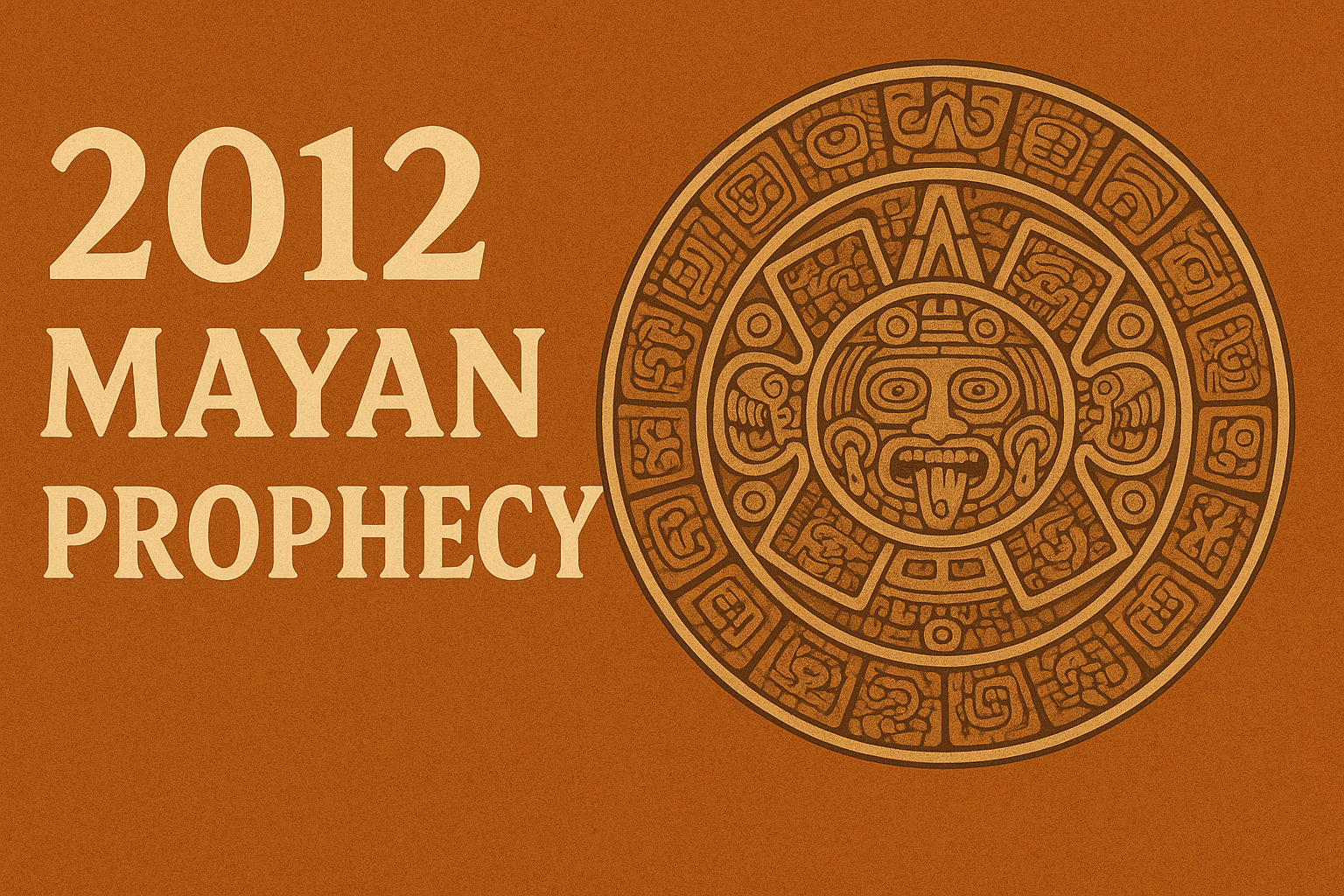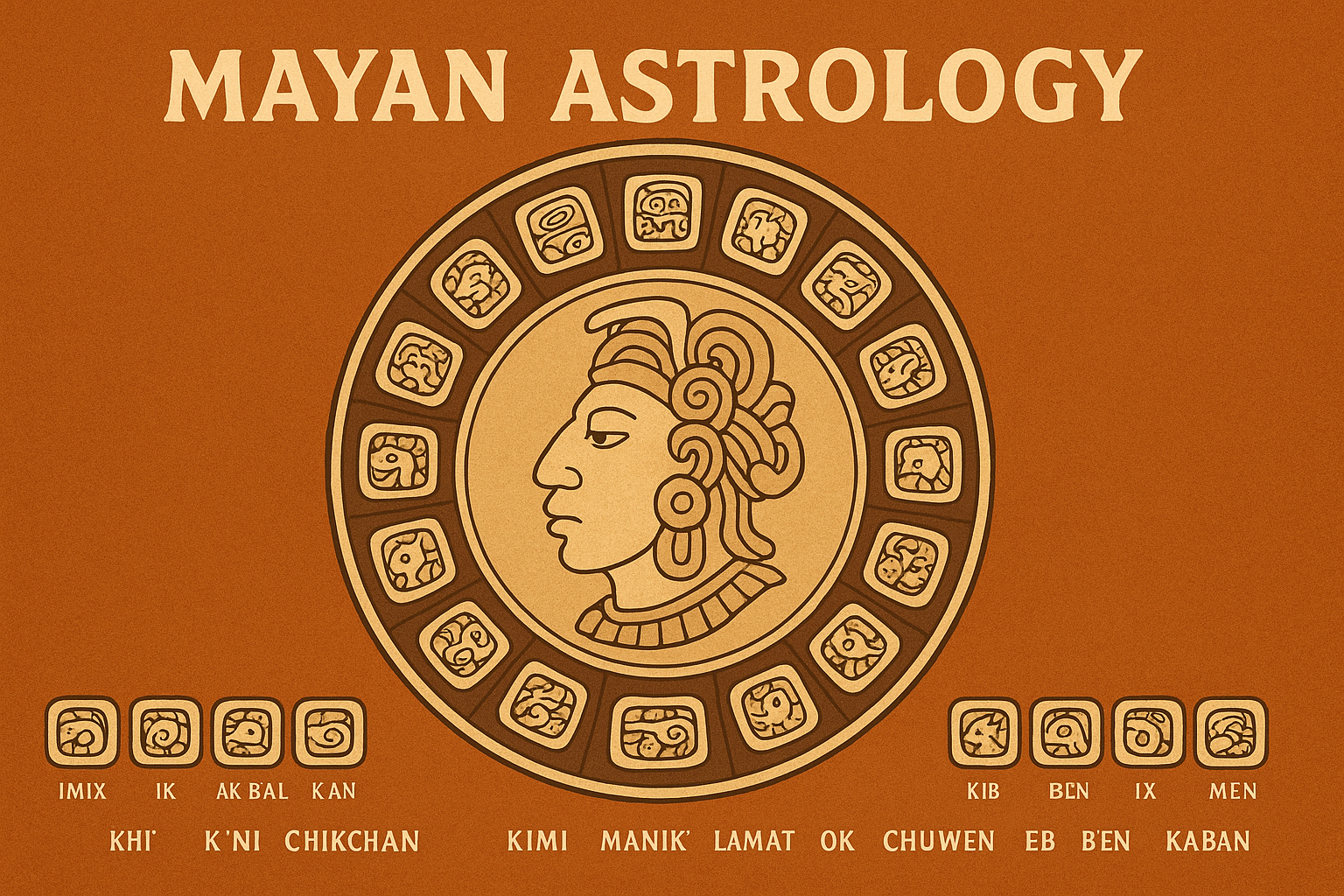Unveiling the Top 5 Splendor of Semana Santa in Guatemala
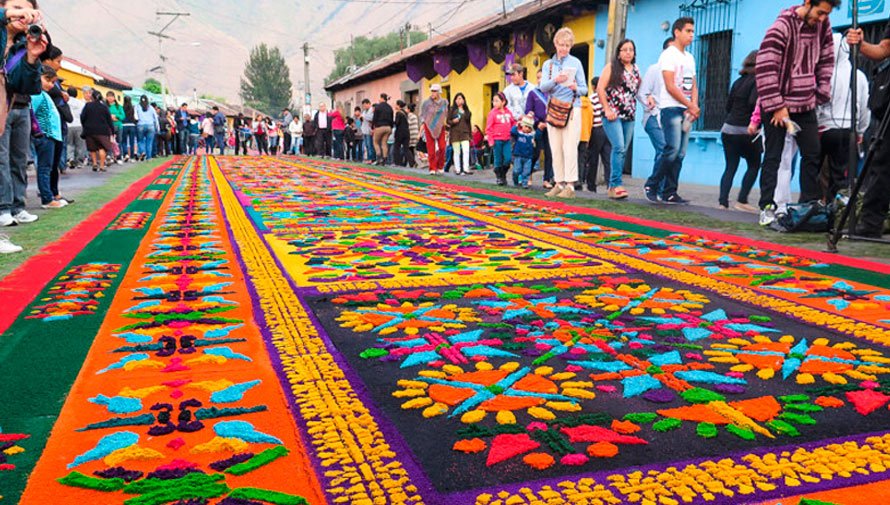
Exploring the Rich Traditions of Holy Week
The Holy Week, or Semana Santa, is celebrated with great fervor and piety in Guatemala. During this week, the country is transformed into a stage for an array of time-honored traditions that encompass both religious solemnity and cultural vivacity. From the heart-stirring processions to the creation of stunning street carpets, the week-long series of events draws participants and onlookers into an immersive experience of spirituality and community. Through these sacred traditions, Guatemalans express their faith and reflect upon the spiritual journey that Holy Week signifies.
The Processions: A Testament to Faith and Artistry
In the heart of Guatemala, amidst the fervor of devotion and art, Semana Santa emerges as a period of profound spiritual significance. It is during this Holy Week that the streets become a vibrant tapestry of religious observance and cultural expression. Central to these festivities are the processions, magnificent parades that wind through cobbled streets, as embodiments of reverence and creativity. Ornate floats called “andas” carry religious icons through towns and cities, while enrobed participants, known as “cucuruchos”, shoulder the weight of these sacred burdens. Each procession, lovingly crafted by local churches and communities, narrates scenes from the Passion of Christ, engendering a profound communal experience that touches the soul of both spectator and participant alike.
The Carpets of Sawdust: Guatemala’s Colorful Canvases
The artistry of Semana Santa in Guatemala is not confined to the processions alone. Behold the “alfombras de aserrín,” the intricate carpets of sawdust, created with painstaking precision and devotion on the very streets of Guatemala. These ephemeral masterpieces, exhibiting a kaleidoscope of colors, are composed of dyed sawdust, flowers, pine needles, and even fruit. Constructed through the collective efforts of families, neighbors, and friends, they serve as transient foundations for the processional routes. The carpets, a fusion of ancestral practices and religious iconography, are offerings of faith, symbolizing the fleeting nature of life and the enduring spirit of the community.
Cultural Significance of Semana Santa to Guatemalans
Semana Santa in Guatemala is a time-honored observance that weaves together the country’s Spanish colonial heritage and indigenous cultural roots. The practices that unfold during this sacred week are a testimony to the country’s rich historical tapestry. Through a series of liturgical and cultural expressions, Guatemalans demonstrate their devotion and the relevance of these rituals in contemporary society. Beyond its religious significance, Semana Santa serves as a pivotal occasion for reaffirming social ties, stimulating the economy, and showcasing Guatemala’s deep-seated cultural values to the world.
A Historical Perspective on Holy Week Celebrations
The roots of Semana Santa in Guatemala stretch deep into the historical fabric. Since colonial times, these sacred rituals have evolved, intertwining indigenous and Spanish traditions to forge a unique cultural identity. Originating from Catholic observances introduced by Spanish conquerors, these practices were adapted by the indigenous populations, who infused them with their own beliefs and customs. Today, Semana Santa is a poignant reflection of Guatemala’s complex past, a time when the air is thick with the scent of incense and the echoes of history resonate through each chant and prayer, joining diverse heritages in a shared spiritual solidarity.
The Impact of Semana Santa on Guatemalan Society
Semana Santa holds a mirror to Guatemalan society, reflecting the myriad ways in which these commemorations imprint themselves upon the national consciousness. It is a period when the temporal is transcended, and the focus turns toward introspection, community, and tradition. Holy Week’s celebrations are not merely religious ceremonies but pillars of Guatemalan cultural identity. They foster social cohesion, fortifying bonds within communities as individuals unite in common purpose. Moreover, the festivities are a linchpin for the economy, attracting tourists and supporting local artisans who create the regalia and ornaments indispensable to Holy Week’s expression.
Your Ultimate Guide to Experiencing Semana Santa in Guatemala
For travelers and observers wishing to experience the wonder of Semana Santa in Guatemala, this guide serves as a compass to navigate the spiritual and cultural majesty of the week. With recommendations encompassing the best locations to visit, essential travel tips, and insights into the heart of the celebrations, this comprehensive overview aims to prepare visitors for an unforgettable immersion into Guatemalan Holy Week traditions. Emphasizing preparedness and respectful engagement, the guide ensures that attendees can fully participate in and appreciate this pinnacle of Guatemala’s religious and cultural calendar.
Best Places to Witness Holy Week Ceremonies
The quintessence of Holy Week can be encountered in La Antigua Guatemala, a city renowned for its colonial architecture and cobblestone streets, which provide a picturesque backdrop for Semana Santa. Here, the processions are particularly elaborate, manifesting a celestial theater that unfolds against the city’s historical grandeur. Towns like Chichicastenango and the capital city, Guatemala City, also offer their unique renditions of these ceremonies, each locale contributing its distinctive flavor to the Holy Week observances.
Travel Tips for Visitors During Semana Santa in Guatemala
For those endeavoring to immerse themselves in Holy Week, it is prudent to plan your visit meticulously. Accommodations in popular locations should be booked well in advance due to heightened demand. Embrace each moment, from dawn when the first procession departs to dusk when the final float returns to its sanctuary. Attire should be respectful and comfortable for long periods of standing and walking. Visitors should also be prepared for large crowds and allow extra time for travel due to street closures and processions.
The Culinary Delights of Holy Week in Guatemala
As much as Semana Santa in Guatemela is a spiritual journey, it is also a feast for the senses, particularly the taste buds. Guatemalan cuisine during Holy Week is replete with traditional dishes that bear significant cultural and historical meanings. From unique recipes prepared specifically for this period to the festive street food that energizes the crowds, the culinary aspect of Semana Santa adds a delectable layer to the overall experience. This section serves to guide the gastronomically curious through the myriad tastes that are as integral to the Holy Week as the processions and prayers.
Traditional Foods of Semana Santa in Guatemala
Holy Week is also a celebration of culinary traditions, serving as a stage for indigenous and Spanish flavors to merge. Signature dishes such as “bacalao a la vizcaína” (dried salted codfish), and “frutas en dulce” (candied fruits) adorn Guatemala’s tables during this time. Each recipe carries the essence of family heritage, passed down through generations and savored in communal feasts reflecting the unity and convivial spirit of Semana Santa.
Guide to Street Food During Holy Week Festivities
For those with a predilection for authentic gastronomic experiences, street food during Semana Santa in Guatemala offers an unparalleled opportunity to taste the local fare. Vendors line the procession routes, offering tantalizing treats such as “churros,” fried plantains, and “tostadas,” topped with guacamole or other local ingredients. Navigating through these stalls, one discovers the flavors that constitute the culinary mosaic of Guatemala during its most sacred week.
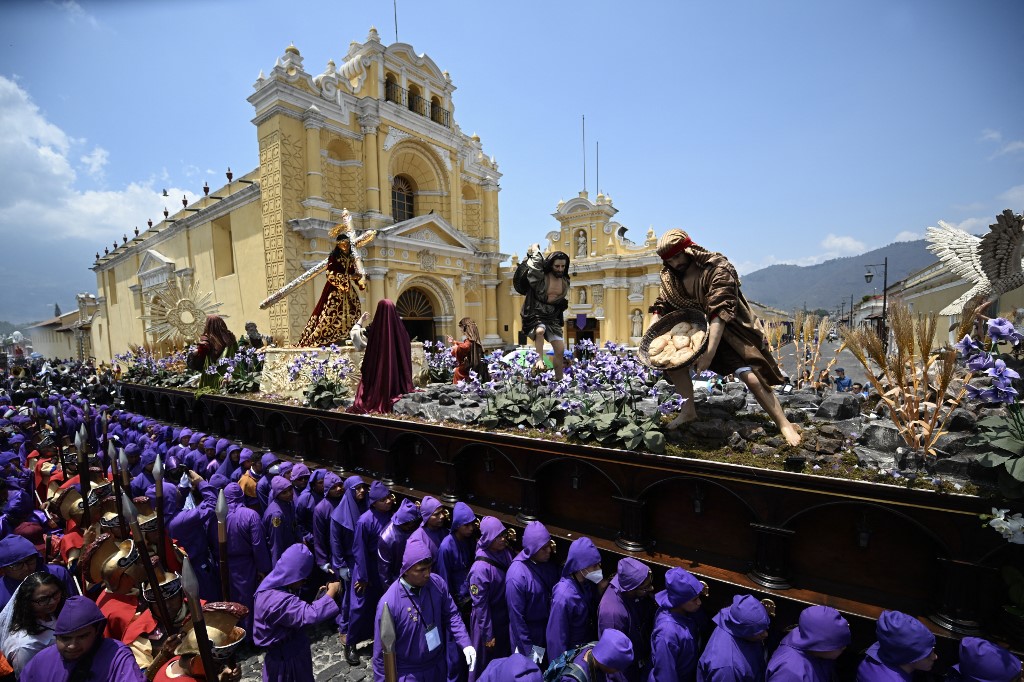
Photographer’s Corner: Capturing Semana Santa in Guatemala
For visual storytellers, Semana Santa in Guatemala offers an extraordinary palette of scenes to capture through the lens. This section is dedicated to photographers seeking to immortalize the vibrant colors and poignant moments of Holy Week. With tips on technique, etiquette, and narrative framing, the guide supports photographers in their quest to document and share the essence of these deeply rooted traditions. Whether a seasoned professional or a photography enthusiast, this corner provides insightful advice to turn images into powerful narratives of Guatemala’s Semana Santa.
Tips for Photographing Religious Processions
The visual splendor of Semana Santa in Guatemala beckons photographers, amateur and professional alike. To capture the solemnity and vibrancy of the processions, one must navigate crowds with patience and respect. Utilizing lenses with a range of focal lengths can afford diverse perspectives, from the grand scope of the procession to the intricate details of the alfombras. Consider using the early morning or late afternoon light to bathe your subjects in a warm glow, enhancing the ethereal atmosphere of the ceremonies.
The Art of Storytelling Through Holy Week Imagery
Photographing Semana Santa in Guatemala is more than documenting moments; it is the art of storytelling through imagery. Each frame should convey a narrative, encapsulating the emotional pulse of the event. Strive to express the solemnity, joy, and communal essence that define the week. Engage with your subjects when possible, seeking to understand the personal and collective significance of the festivities. In doing so, your photographs will transcend mere observation, becoming powerful testaments to the enduring spirit of Semana Santa in Guatemala.
FAQ: Questions and Answers of Semana Santa in Guatemala
How is La Semana Santa in Guatemala celebrated?
What do people wear during Semana Santa in Guatemala?
During Semana Santa in Guatemala, traditional attire plays a central role, particularly for those participating directly in the processions. Men, known as ‘cucuruchos’, wear purple robes that signify penance during Holy Week, while women, known as ‘dolorosas’, dress in black or white gowns to show mourning and deep respect. These colors are switched to black as Good Friday arrives, marking a more somber commemoration of Christ’s crucifixion. On Easter Sunday, robes are no longer worn as people celebrate the resurrection of Christ often wearing their regular clothing but in a more festive and brighter manner.
How is Maya culture evident in Guatemala’s Semana Santa celebrations?
Maya culture is intricately woven into Guatemala’s Semana Santa through the symbiosis of Catholic rituals and indigenous beliefs and customs. The ‘alfombras’, which are one of the most distinctive aspects of these celebrations, often feature Mayan symbols and designs, incorporating a reflection of the country’s rich indigenous ancestry. Additionally, in many indigenous communities, the celebrations include unique rituals that predate the arrival of Catholicism, intertwining ancestral customs with the religious ceremonies of Holy Week, suggesting a deep blend and respect for both traditions.
What do they eat during Semana Santa in Guatemala?
What are the historical origins of Semana Santa in Guatemala?
Semana Santa in Guatemala has historical roots that trace back to the Spanish conquest in the 16th century. The Spanish conquistadors brought their Catholic religious traditions, including the observance of Holy Week, to the indigenous peoples of the region. Over time, the native Maya culture assimilated and blended these practices with their own, leading to the unique blend of Catholic and indigenous customs that can be witnessed today.
How do the ‘procesiones’ during Semana Santa affect Guatemala City?
During Semana Santa, ‘procesiones,’ or religious processions, have a profound impact on Guatemala City, causing major street closures and bringing normal city activity to a slower pace. Thousands of people from all over the country and tourists flock to the city to participate in or watch the processions, creating a bustling and crowded environment. The processions are both a spiritual and a cultural event and are central to the week’s celebrations, with their routes often planned a year in advance.
Are there any environmental concerns associated with the celebration of Semana Santa in Guatemala?
One of the environmental concerns associated with the celebration of Semana Santa in Guatemala is the production and subsequent disposal of the materials used for the ‘alfombras’ or the decorative carpets. While these are stunning and a critical part of the celebration, they can create waste that needs to be managed properly. Efforts have been made in some communities to use organic and biodegradable materials to lessen the environmental impact.
What role do children play in the Semana Santa celebrations in Guatemala?
Children in Guatemala often participate in Semana Santa celebrations by helping to create the ‘alfombras’, learning the religious and cultural significances, and even partaking in children’s processions in some places. These activities are seen as important for passing the traditions from one generation to the next and keeping the cultural heritage alive. In some processions, children dress as angels or other biblical figures, adding to the richness and diversity of the festivities.
Summary of Semana Santa in Guatemala
As we bring our exploration of Semana Santa in Guatemala to a close, it’s evident that this sacred week goes beyond religious observance; it is a vibrant tapestry of traditions that ignites the senses and the spirit. From the solemn beauty of the processions to the colorful artistry of sawdust carpets, Holy Week in Guatemala presents an unparalleled blend of faith, culture, and community. The historical roots and societal influences of Semana Santa are deeply interwoven into the fabric of Guatemalan life, making it an immersive experience for both locals and visitors alike.
For those yearning to partake in this extraordinary event, our guide offers a wealth of information from the best vantage points for witnessing the ceremonies to practical travel tips tailored to enhance your Semana Santa journey. Culinary enthusiasts have discovered the unique flavors of the holiday, illustrated by our exploration of traditional foods and the bustling street food scene that marks this festive time.
Lastly, for photography aficionados, Semana Santa offers a profound opportunity to capture the essence of Guatemalan spirituality and celebration. The tips and insights provided in our Photographer’s Corner can help you frame the story of this holy week with authenticity and artistic depth.
No matter the perspective from which you engage with Semana Santa in Guatemala, the experience is sure to leave an indelible mark on your heart, enriching your understanding of a culture that reveres its traditions with passion and pride. Semana Santa is not just a week in the calendar — it’s a living, breathing manifestation of Guatemala’s soul.
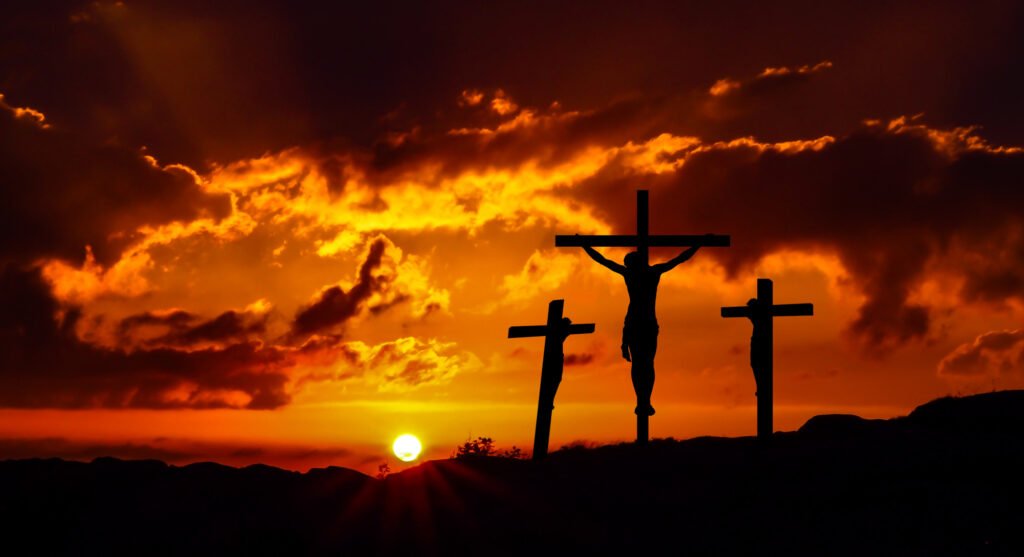
Don’t know where to stay? At Eagles Nest we offer all inclusive rooms. Enjoy the included yoga classes, delicious traditional food, and breathtaking views. We also host yoga retreats, make sure to attend during your stay. Book here.

